HP DreamColor Z27x Monitor Review
When I was putting together my rather extensive post on ‘Affordable Colour Grading Monitors‘, HP kindly sent a DreamColor Z27x monitor for me to review and I’ve now finally gotten around to putting fingers to keys to share my thoughts on life in the edit suite with a 27″ DreamColor monitor.
The first HP DreamColor came out in 2008, and the second generation came out last year in 2014. This first generation monitor was awarded with a Scientific and Engineering Academy Award for it’s contribution to the industry, with the press release stating:
Since the original product launch in 2008, the HP DreamColor Display has been used in the creation of blockbuster and award-winning films. HP DreamColor Displays helped bring color to life for a magnitude of award nominees and winners, including “Life of Pi,” “Hugo,” “Gone Girl” and all DreamWorks’ animated films from “Madagascar” and the “How to Train Your Dragon” series.
A high pedigree indeed! And the second generation monitor is a huge leap forward from that first outing, and, it doesn’t come with as hefty a price tag as it’s spec would suggest it should. In the excellent Studio Daily review HP’s DreamColor Product Manager, Greg Staten, commented that the Z27x was specifically designed (in collaboration with Dreamworks SKG) to be used as a studio level monitor and that
“It’s literally the best DCI coverage that you’ll find out there, unless you spend around $30,000 for your display.”
HP Z27x Stats and Spec
Price – $1254/£700 | Size – 27″ | Resolution – 2560 x 1440 | Contrast Ratio – 800:1 minimum | Viewing Angle – 178° | Gamuts – sRGB D65 (100%), RGB D50 (100%), Adobe RGB (100%), BT.709 (100%), BT.2020 (68%), DCI-P3 (99%) | Inputs – HDMI, 2 x Displayport
If you’re into this kind of thing, you can check out the official 7 page quick spec sheet from HP here, including details of the Color Management engine…
1D LUT> 3×3 matrix >1D LUT, 14-bit precision. Up to 12-bit per channel input, 10-bit output that produces 1,024 gray levels per channel and up to 1.07 billion on-screen colors.
the colour gamuts…
100% of sRGB, 100% of BT.709, 100% of AdobeRGB, 99% of DCI-P3, 68% of BT.2020 (CIE 1976)
… and a whole bunch more info to boot. You can also grab any firmware, software or driver updates from this page.
Editing with the HP Z27X DreamColor Monitor
First of all, what’s in the box and how easy is it to set up?
Answer: HP DreamColor Z27x Professional Display, AC power cord, USB cable, DisplayPort cable, HDMI cable, DisplayPort mini cable, DVD documentation kit, factory calibration report.
And it is incredibly easy to set up. The display ships disconnected from the stand but it’s a very simple slide and click for the monitor and stand to become one. It is equally easy to remove the stand from the screen’s secure hold, should you need to. One of the things I’ve liked about the monitor is that it really isn’t very heavy for it’s size, but it still feels nice and robust in it’s construction, so it’s easy to move about if you need to, without feeling like it’s too delicate.
The first time I got the monitor connected up to my 2013 Mac Pro, I suddenly realised that it was the first time my Mac Pro felt like a real computer. Up until that point I’d only been using it with a terrible old Dell monitor (see image below) that I had lying around, because I was waiting to pick up a decent monitor, an investment to make use of for a few years to come. Now such a monitor was connected and it transformed what I was looking at for 8 hour stretches of the day. 27 inches of high-resolution, colour accurate glory.
So what’s it been like editing on the Z27x?
Really, really great. I finally have some decent screen real estate to stretch out in, being able to keep the timeline large and central whilst not having to work with a tiny viewer. It’s made the projects I’ve cut from home a joy to work on, not least because I’ve finally got something to display the images on properly, but because they’ve also looked lovely on it.
I’m also a big fan of matte screens because I’m almost never working in a truly optimal viewing environment, and, given that most of my day-to-day work is editorial, I like having a window in my home office! I shall rue the day I finally have to give up my old 17″ Macbook Pro (the last to ship with a matte display) for a glossy one. Anyway the matte finish to the Z27x is much more preferable than ducking and diving around reflections on a glossy screen.
Of course, if I were a serious colorist, (I would be buying a serious monitor and…) I wouldn’t have any natural light in my room at all! But that’s not the scenario we’re running with here. I’m an editor who likes to have good tools to work with, and a little bit of day light to keep the soul happy.
Pros and Cons of the HP Z27x
There is a lot to like about the HP Z27x. It’s very easy to get it set up, and the factory presets for the colour gamuts makes it easy to makes sure you’re working in the right way for the job at hand. The fact that you can also customise the monitor’s hot keys to map them to your own particular function presets, is also very handy if you were constantly needing to jump around within the menu.

Although having a quick look around if I was going to get a true 4K monitor, there aren’t many 4096 capable screens (most are UHD) around. The LG 31UM97-B looks pretty good in this regard, as even the Z32x (HP’s latest DreamColour – available ‘this summer’) will only display 3840 x 2160 and they haven’t announced the price just yet.
But currently this review isn’t about 4K, as almost all of my clients are shooting in 2K. But I am wanting something that will future proof me. Hmm… but back to the Z27x.
One of the very impressive things about the monitor (and that is often commented on in other reviews) is the quality of the images, colour reproduction and the technical specification. But you can’t see stats, what you can see, are really lovely images. Studio Daily reviewer David English sums things up well when he says:
I can tell you that I saw a subtlety in the colors and shading, especially in the shadows, that I haven’t seen on a display that sells for anywhere close to this price.
Calibrating the HP Z27X
As part of borrowing a Z27x, I was also loaned the DreamColor’s own calibration device, an HP branded X-Rite i1Display colorimeter to test out. The Z27x will work with calibration equipment from Klein Instruments, PhotoResearch, Konica Minolta and X-Rite. There is a very handy official HP guide to calibrating the monitor which you can easily follow to calibrate your screen for the first time. You will want to have had the screen warming up for at least 30 minutes and be performing the calibration tests in as dimly lit surroundings as possible, so as not to interfere with the measurements.
Far more technically astute than myself, it’s well worth wading through the Tom’s Hardware review of the monitor if you want a full blow-by-blow account of the screens technical performance, but from an editor’s point of view (albeit an editor who wants accurate colours), it’s really simple to position the X-Rite on the screen and, thanks to the monitor’s internal calibration engine – so, no other software or hardware is required – set the Z27x off on it’s merry way to calibrate itself.
UPDATE: It’s been brought to my attention by an editor friend, that the non-branded iDisplay colorimeter isn’t compatible with the HP Z27x monitor, so you have to buy the branded one to get this seamless integration. The official HP documentation states:
HP DreamColor Calibration Solution HP also offers a low-cost calibration solution, the HP DreamColor Calibration Solution (DCS). The DCS kit includes both an HP-branded X-Rite i1Display colorimeter and a calibration software CD which is designed to be used on other HP displays including the DreamColor LP2480zx and DreamColor Z24x. This software does not need to be installed on a computer in order to calibrate the Z27x display as the i1Display instrument is directly-connected to the Z27x. Indeed, if the software is installed, it will not recognize the display. Retail versions of the i1Display are not currently supported with the Z27x.
The monitors remote management functionality also means that in a big studio setting, your IT department could simply dial in to the screen and re-jig things themselves, without individual artists needing to get involved. Although as the following notes from the HP Calibration Guide point out, you won’t need to calibrate it very often at all!
Calibration Frequency Recommendations – HP has been performing real-time continuous ageing on a set of Z27x displays since November 2013. As of the release of the Z7X230/Z7X240 revision of this document we have accumulated over 7500 hours of real-time ageing data for this display. Based on current ageing data we make the following recommendations to maintain display accuracy:
• As with all LED backlit displays, there is a burn-in period where the LEDs will drift slightly until they “settle down.” Though the amount of burn-in drift will vary from display to display, we have observed a typical white point drift of approximately 1.0 Delta E 2000 after 250 hours. Therefore, we recommend that you recalibrate the displays after 250 hours. (If you wish to pre-burn-in displays prior to calibration and deployment, 250 hours is equivalent to approximately 10 ½ days of continuous burn in.
• Once you have passed the burn-in period, the display’s chromaticity is extremely consistent. We have observed stability (to within 1.0 Delta E 2000) for over 2500 hours between calibrations. We have seen this to be consistent over the ageing data we have accumulated, but it is always best to be somewhat conservative with calibration frequency.
• Therefore, we recommend that you calibrate your Z27x displays every 2000 hours. (As many facilities wish to be conservative in their calibration frequency, you may choose to calibrate more frequently.) We will continue to perform real-time continuous ageing and will update these recommendations as needed.
Final Thoughts on the HP Z27X
Having had the HP Z27x in my edit suite for the past few weeks, I’ve grown very accustomed to staring long and hard into it’s 27 inches of colour accurate goodness. It will be hard to send it back. Although, before testing it out, I wasn’t 100% convinced it was the monitor for me. I had been pondering acquiring something like an EIZO CG277, having used the monitor a few times in some post-house suites – but that’s almost twice the price of the HP Z27x, and I’m not sure I’m willing to spend £1,400/$2244 on an EIZO when a FSI CM171 is the nearly same price ($2495/£1500) – if I were seeking to put more money into colour accuracy.
What I need is a monitor I can trust enough to be confident in, whilst giving me the screen space I need to work happily for many hours at a time. It feels like, in the HP Z27x, that happy medium is found. Great colour accuracy and technical specification, combined with plenty of screen space and a very reasonable price. Re-watching Dave Dugdale’s monitor shootout (scroll down to near the bottom) I’m half tempted to see if I can borrow an LG Ultrawide monitor, just to see what that is like. But I’d probably feel more comfortable with something that represents a ‘normal’ aspect ratio.
So, unless I can find a monitor that delivers as good or better than the HP spec, for the same kind of money (or less!), then I’ll almost certainly spring for the Z27x. And to be honest, having looked around, I don’t think I’ll find one, and I do really like the Z27x.
If I wanted to be 4K ready (a consideration if I want the monitor to be useful in the suite for longer) then something like the LG 31MU97-B might be a good option, and it’s only a couple of hundred more than the HP. Time to make a decision…
Buy HP Z27x on Amazon.com | Buy HP Z27X on Amazon.co.uk
Monitoring 10-bit Video on a Mac
Here is an important factoid that you need to know if you want to be monitoring 10-bit video on your Mac Pro or other Apple hardware. As of OSX Yosemite 10.10, the Mac operating system is still natively 8-bit. (Windows 7 and up, is 10-bit native, I believe.) This means that if you want to view 10-bit video on a Mac you need to have 10-bit all the way through your signal path from your footage to your display.
On a Mac both DaVinci Resolve and FCPX will, for example, output 10-bit footage through a 10-bit capable I/O device via a 10-bit cable to a 10-bit monitor. For example, outputting your 10-bit footage from DaVinci Resolve via a Thunderbolt connected Blackmagic Design Ultrastudio Express hooked up to a 10-bit capable monitor via HDMI or SDI will give you 10-bit on a Mac.
For a really clear and detailed explanation of all this check out this thread on the BMD User Forum. The Thunderbolt connection on the Mac Pro is just an extension of the bus (like slotting a card in your old tower) so until OSX becomes 10-bit native, you can’t just hook up a Thunderbolt/Displayport cable from the Mac Pro to the monitor and have it work.
If you only want to monitor HD 10-bit video, then the Blackmagic Design Mini Monitor is a cheaper solution than the dual Input/Output of the Ultrastudio Express. The AJA T-Tap is a similar device but it might be worth checking the compatibility first. As part of my testing of the HP Z27x Dreamcolor display, Blackmagic Design were kind enough to lend me a Ultrastudio Express too, and you can read my write up of it below.
Another resource you might want to check out is Apple’s official support page for 4K monitors and UHD TVs.
As a quick aside, let’s dip into the 10-bit vs 8-bit FRC panel discussion with a couple of knowledgeable quotes from experts on the issue.
There is a slight but important difference between the Z24x and the Z27x. The Z27x is true 10-bit. The Z24x has what’s referred to as a ‘fake 10-bit’ which is 8 bit + 2FRC.
There is a misconception that 8bit with FRC may generate unacceptable artifacts for professional video monitors. Modern day FRC algorithms provide very accurate color reproduction and will actually produce significantly less artifacts when viewing a 10 bit video signal than an 8 bit panel without FRC, which will show some degree of banding and exponentially fewer colors. Native 10 bit panels are of course the best solution, but the price premium is quite significant for a very marginal improvement in performance. 8 bit + FRC is becoming the new norm in many high-end consumer and professional displays. The difference between 8 bit monitors with advanced FRC and native 10 bit monitors is so negligible that many manufacturers now simply refer to both technologies as 10 bit. – Flanders Scientific
Furthermore Greg Staten commented, over on the Lift Gamma Gain Forum, that
You can make 8+2 FRC panels that look extremely good and there are both spatial (within frame) and temporal (between frame) dithering that can be used. The Z24x is an 8+2 FRC display and looks quite good. The main limitation of FRC comes when looking at subtle shading across a narrow tonal range and the most common place where artifacts can be seen is in skies, mostly manifesting itself in a grain-like pattern that is an artifact of the dithering.
The Z27x is a true 10-bit panel and provides an additional 2 bits of FRC (so you could call it a 10+2 FRC display, but I typically just refer to it as 10-bit). In this case the dithering is used not so much to add additional tones to the image, but to reduce the higher internal bit precision to that the panel can accept. Proper spatial dithering typically produces better results than truncation. (Incidentally, the Z27x, while capable of both temporal and spatial dithering, ships with temporal dithering disabled. This was done based on feedback from animation/vfx houses that beta tested the display. If desired, though, temporal dithering can be turned back on using the monitor’s API.)
So the main point being that the panel in the Z72x is a true 10-bit panel. You could buy a cheaper (Z24x) 8-bit panel if you wanted to, and apparently it wouldn’t look that bad. But that’s up to you, and of course, you wouldn’t be monitoring 10-bit video!
10-bit Video on Mac with UltraStudio Express
https://www.youtube.com/watch?v=32obD3sVKe4
Blackmagic Design were kind enough to ship me a demo unit of the UltraStudio Express, one of their Thunderbolt powered I/O devices for getting 10-bit video into and out of your machine, so that I could work with 10-bit HD video whilst using the HP DreamColor Z27x.
If you watch the video above you’ll get a very thorough step-by-step guide to using all of the UltraStudio Express’ many capabilities, and if you skip to 17 minutes 24 seconds in, you can see just how easy it is to use it to output 10-bit video via HDMI or SDI from FCPX or Resolve. In order to do this you will need a second display to run your GUI on, to output the source program’s video feed to the Z27x in 10-bit. As in, the UltraStudio Express won’t mirror your desktop in 10-bit, but only output a video feed from a software application.
The UltraStudio Express is a really well designed and compact device and the aluminium casing both looks great and feels very sturdy. Setting it up is pretty much plug and play, although you will need to download the Desk Top Video software from Blackmagic Design to ensure the drivers etc are installed and to configure the device or update the firmware. You can also grab the Desk Top Video Manual here if you need it, which will take you through using the UltraStudio Express with numerous NLE’s and third-party software, for capture and playback.
If you want a closer look at the UltraStudio Express’ complete spec, with a very clear breakdown of it’s I/O capabilities, including codecs, cross conversions and more hit the official Blackmagic Design site here. You’ll also be able to compare it to it’s bigger (UltraStudio 4K Extreme) and smaller siblings (UltraStudio Mini Monitor/Recorder) too. There’s a lot this little box can achieve and the free Media Express software is actually very handy too.
UPDATE – Just to make it clearer in this post the top resolution output of the Ultrastudio Express and Mini Monitor is only 1080 HD.
As I was only using the UltraStudio to monitor 10-bit video from my NLE and Resolve, I wasn’t really putting it through it’s paces, but it was great to be able to familiarise myself with it and know I could rely upon it to do the job and do it pain-free. Would I buy one? Probably yes. Although I could quite easily monitor video through the far cheaper UltraStudio Mini Monitor (£99 vs £335 or $145 vs $495) I always like to be prepared for future, unforeseen scenarios like wanting to hook up an SDI monitor or deck and so would rather have both In and Out.
Sleek, solid and simple to use the Blackmagic Design UltraStudio Express is a very nice piece of kit that will serve you well.
Buy on Amazon.com | Buy on Amazon.co.uk
UPDATE – Mixing Light Colorists on the HP Z27x
In this ‘Mailbag’ episode from the MixingLight.com colorists you can get their thoughts on the monitor and how to best set it up, via the inbuilt presets, and with an X-Rite Color Monkey calibration probe (which won’t work with the HP Z27x).


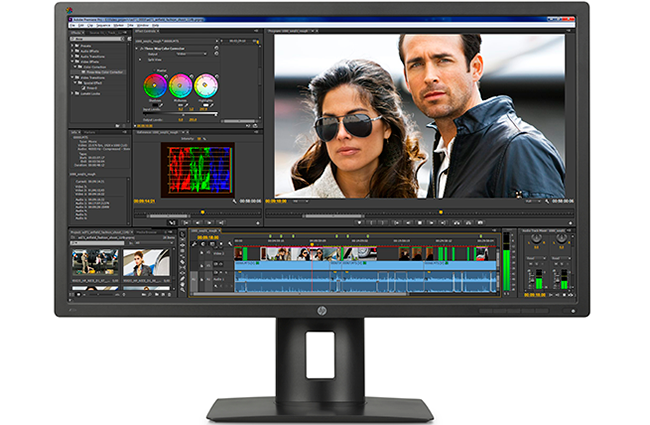
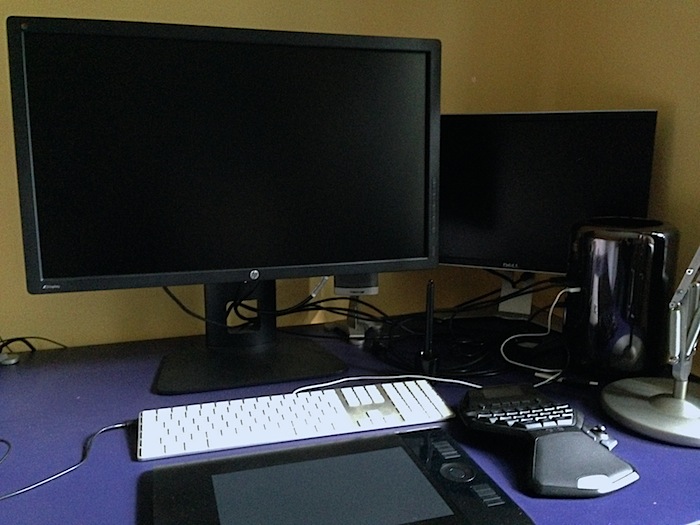
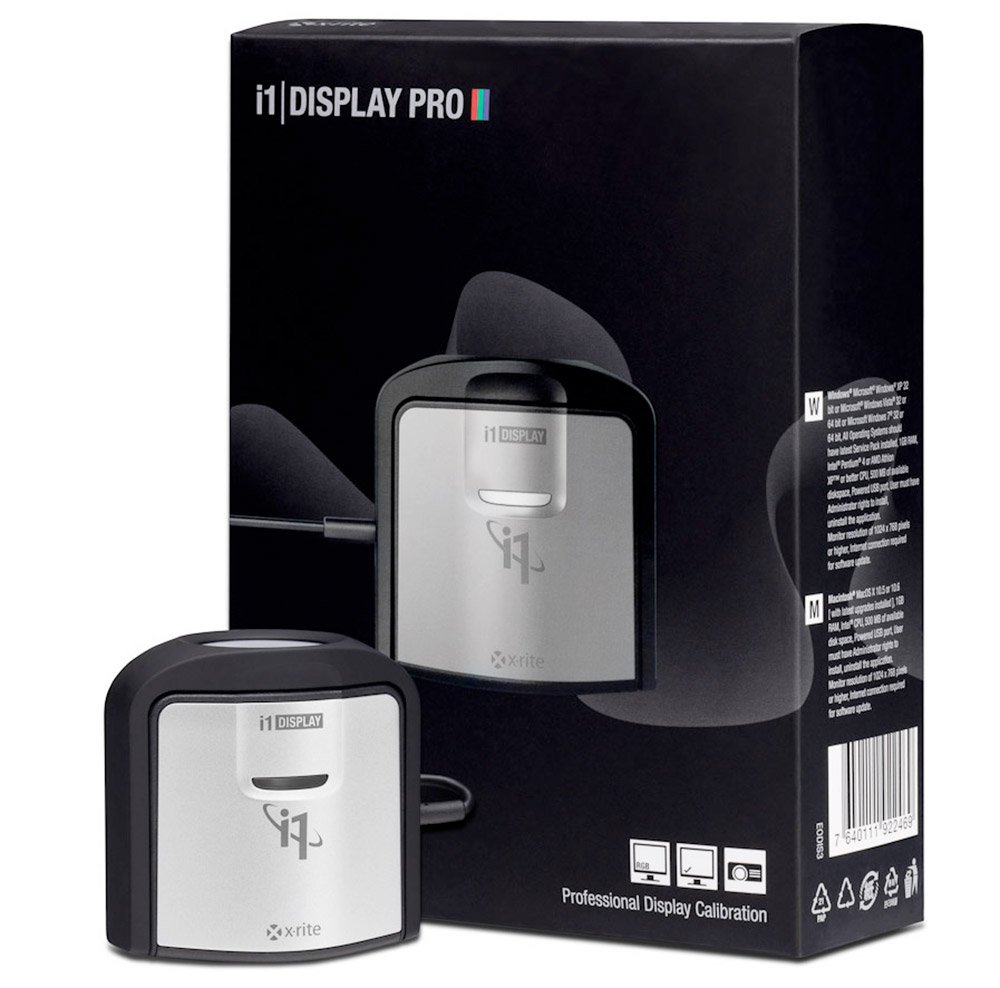


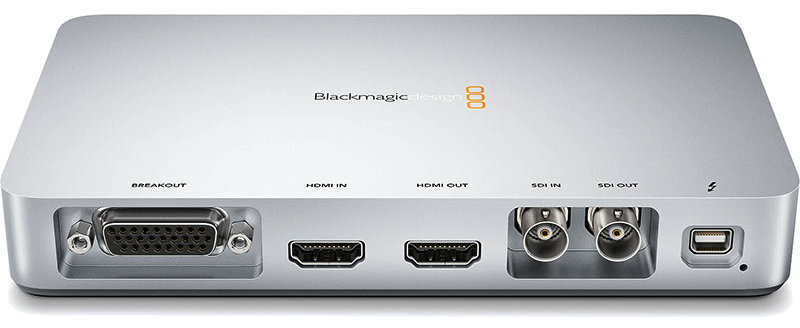
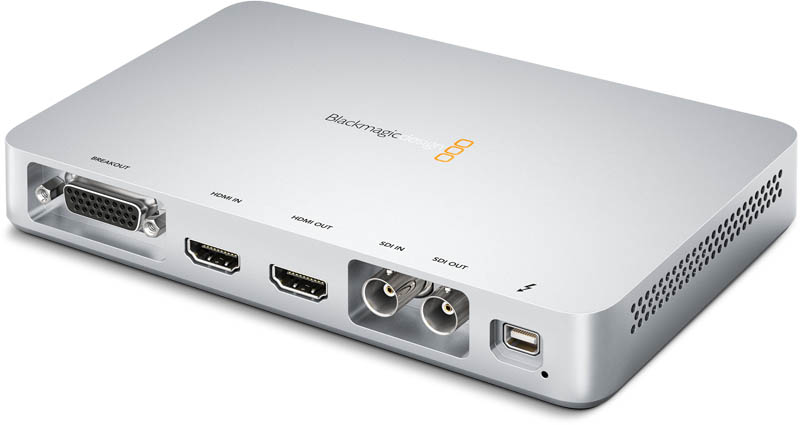




I have my dream color lp2480zx hooked up via quadro 4000 cards using a display port adapter and it supposed to be 10bit also. In addition I have a matrox mojito max which is also 10bit output using yosemite OS X on my Mac Pro 2010.
If you do want to enable the Z27q 5K monitor on a Mac Pro (2013) here is how to do it…
http://www.iclarified.com/49265/how-to-enable-support-for-the-hp-z27q-5k-monitor-in-mac-os-x-yosemite
Hi, thanks for the input, iam also thinking about jumping into the dreamcolor line – why didnt you goy for the:
HP Z27q IPS 5K Display
it is all that but in 5k, meaning you broke through the UHD Wall and can monitor true 4K, am i right?
Would love to hear your thoughts.
Wasnt the the 5K version of the Z27 availavle/announced when you started the review?
Hi Florian, thanks for commenting on the post. I had not heard about the 5k display! I’ll have to look into it. I’m wondering if it is supported on the Mac Pro (officially) as so few are at the moment?
Hi Florian,
I’ve checked out the HP Z27q and it’s designed as a Business monitor rather than a post-production monitor.
http://www8.hp.com/uk/en/products/monitors/product-detail.html?oid=7130944#!tab=specs
Hey Jonny, it is really getting exausting now, iam searching and comparing for weeks now…. i will get a workstation based on a nvidia titan X – monitored by my old LG 1080p Display for the Interface and OS – but for the monitoring/grading of my potential 4k 10bit video-signal iam desperatly looking for a solution, starting with a Black Magic Design DeckLink 4K Pro, so iam at SDI, that i have to convert into a displayport for any usual pc-display – at fact there is no sdi to displayport converter capable of true 4K…so why not go for a SDI – 4K monitoring solution – spreading my range to a maximum of 3000 euro (that should be my limit for a single display)… even flanders dont offer 4K – not talking about that i could afford a flanders at 4K… so what to do…. another possibility is (very affordable in my humble opinion) https://www.blackmagicdesign.com/products/smartview4k BM Smartview 4K – any thoughts/experiences on that…iam going nuts here, never thought that this research for 4K 10bit would be so huge and long….. looking forward to your reply. 🙂